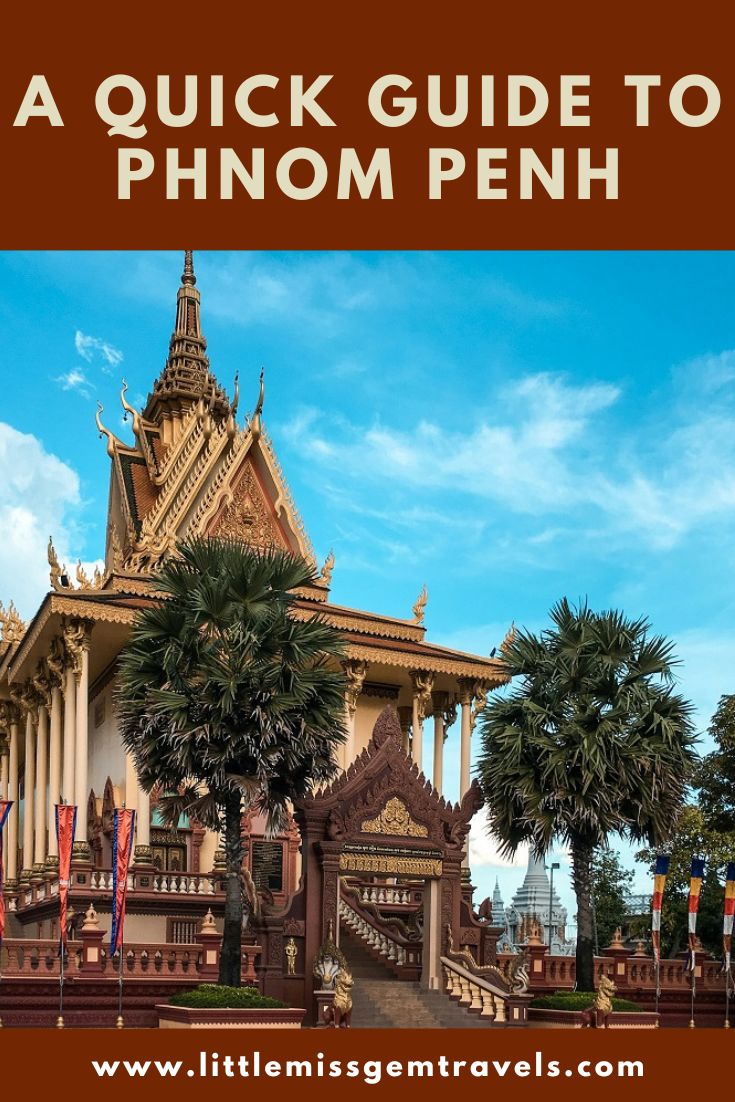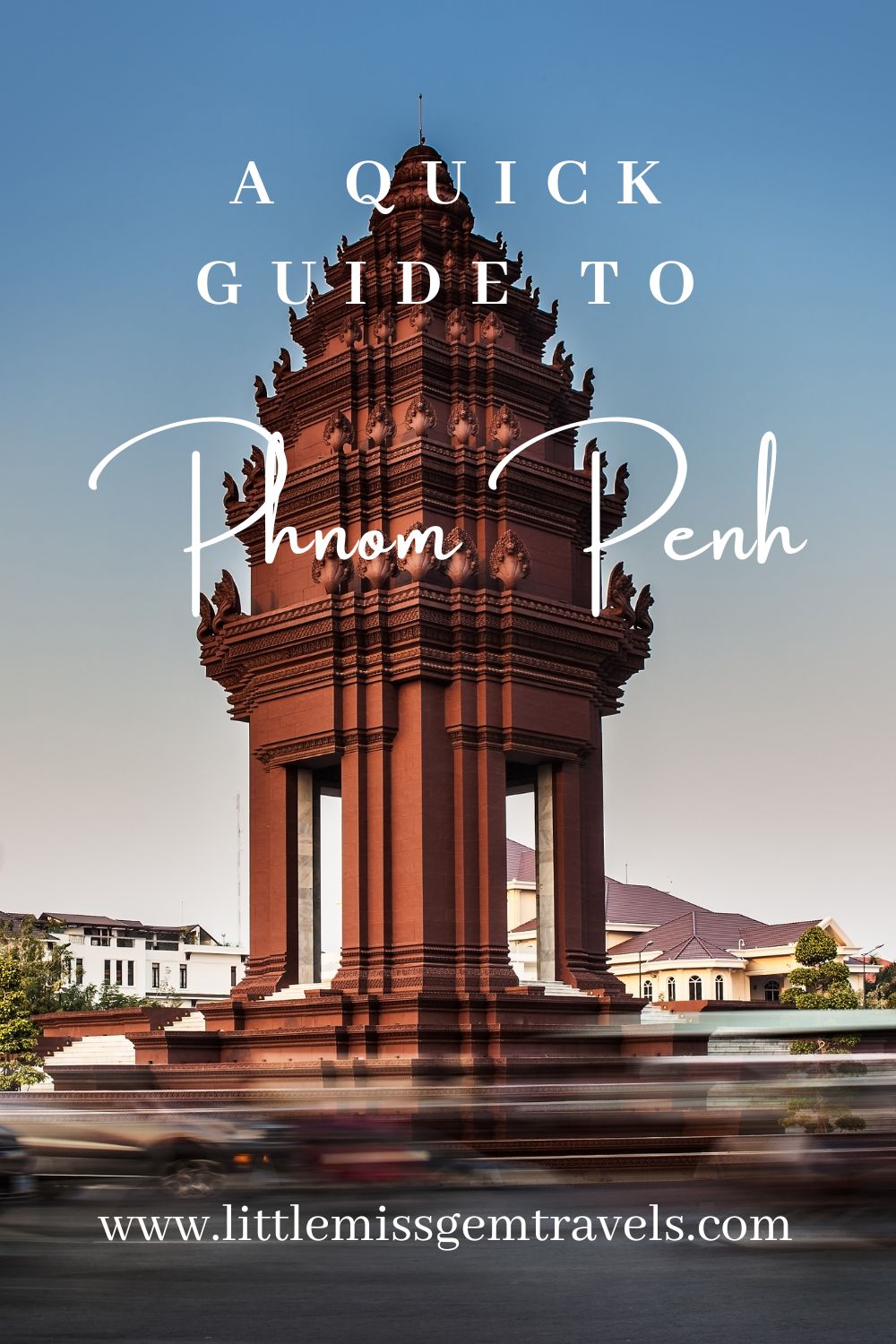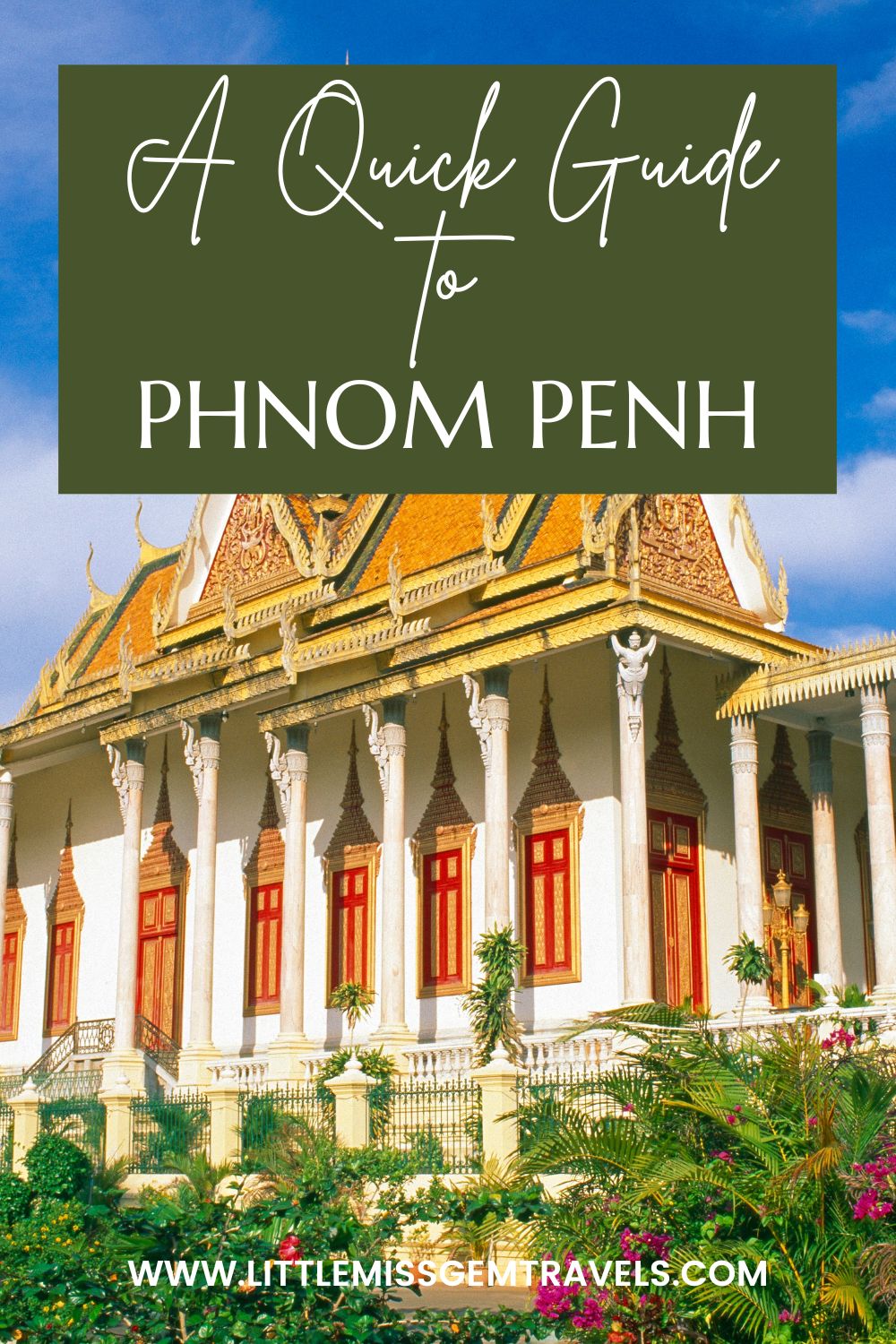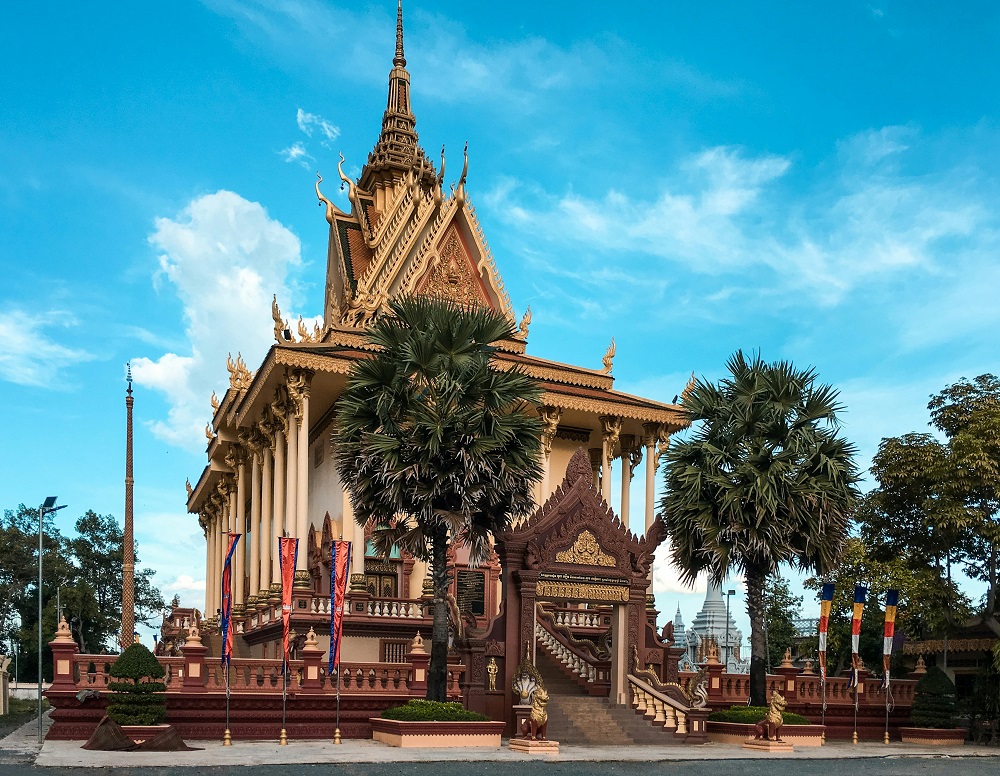The posts in this blog may include affiliate links. This means that when you decide to purchase anything through these links I get a small commission at NO extra cost to you.
Phnom Penh is a vibrant city and the cultural, economic, and political capital of Cambodia. With a rich history, bustling markets, and fascinating landmarks, Phnom Penh offers visitors a unique blend of traditional Khmer culture and modern life.
A Quick Guide to Visiting Phnom Penh
What to Visit
Royal Palace and Silver Pagoda: The royal residence of the King of Cambodia and a home to many national treasures to be viewed.
National Museum of Cambodia: Home to the world’s largest collection of Khmer art and artifacts, including sculptures, ceramics, and other objects of cultural importance.
Wat Phnom: The tallest religious structure in the city is a Buddhist temple that offers panoramic views of Phnom Penh.
Tuol Sleng Genocide Museum (S-21): A former high school which was turned into the notorious prison and torture center during the Khmer Rouge regime. It is now a museum commemorating the victims.
Killing Fields: A memorial site where thousands of Cambodians were executed and buried during the Khmer Rouge regime.
Central Market (Phsar Thmei): An iconic landmark with a unique architectural style, offering a wide range of jewellery, textiles, and souvenirs.
Russian Market (Tuol Tom Poung Market): A bustling market known for its clothing, handicrafts, and local street food.
Getting Around:
Taxis: Taxis are available in Phnom Penh, but make sure the driver uses the meter or agree on a fare beforehand.
Motorbike Taxis: Known as “motodops,” these are another option for quick trips around the city.
Tuk-Tuks: A popular and convenient mode of transport for short distances. Negotiate the fare beforehand.
Walking: Many of Phnom Penh’s attractions are within walking distance of each other, especially in the central area.
Safety Tips:
Watch for Scams: Be aware of scams targeting tourists, such as overcharging for goods or services.
Stay Hydrated: Phnom Penh can get hot and humid, so drink plenty of water, especially if you’re out exploring during the peak time of day.
Respect Local Customs: Dress modestly when visiting religious sites, and be mindful of local customs and traditions.
Be Cautious at Night: While Phnom Penh is generally safe, it’s advisable to be cautious, especially when walking alone at night or in dimly lit areas.
Eating and Drinking
Head to a street food stall or local restaurant to sample traditional local dishes like fish amok (steamed fish curry), beef lok lak (stir-fried beef), or Khmer red curry. Make sure you try Cambodia’s famous dessert, num ansom chek, a sweet sticky rice cake wrapped in banana leaves.
Stroll along the Tonle Sap River and soak in the bustling atmosphere of Phnom Penh’s riverside. Stop by one of the many cafes or restaurants lining the waterfront to enjoy a refreshing drink or snack while watching the sunset over the river.
Phnom Penh is a city of contrasts, where ancient temples stand alongside modern skyscrapers. Whether you’re interested in history, culture, or simply enjoying the vibrant atmosphere, Phnom Penh has something to offer for every traveller.
Have you visited Phnom Penh?
Let me know in the comments.





